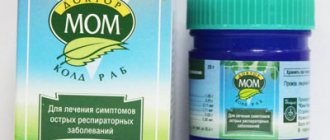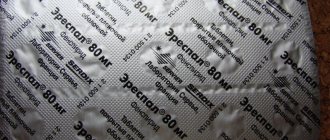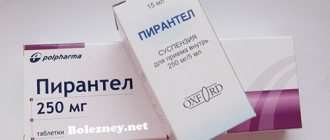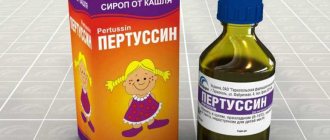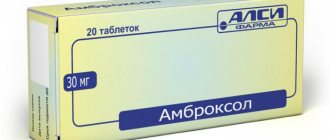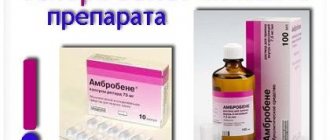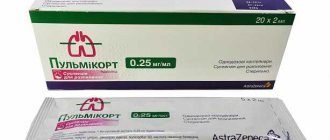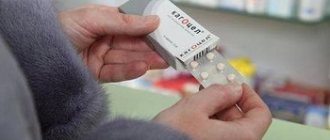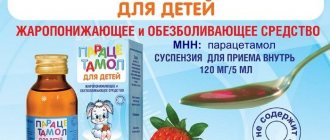Licorice root syrup (licorice) is a preparation made from plant materials; it is one of the best expectorants for coughs.
As a result of a cold, mucus appears in the bronchi, and the drug helps get rid of it. To get a therapeutic effect, you should know how to take licorice syrup for an adult cough. You also need to follow the rules of administration and dosage. Syrup is prepared from a perennial herbaceous plant of the legume family - smooth licorice, which can reach a height of two meters. It has a developed root system. The sweet root is sometimes called licorice root.
Symptom Definition
Cough is the body’s protective reaction to irritation of the respiratory tract, which occurs under the influence of various factors, for example, dust, viruses, bacteria, sputum, and so on.
It should not be considered as any disease, since it is only a symptom. For each disease, cough has its own distinctive features:
- A cough accompanied by a burning sensation or pain in the chest is characteristic of tracheitis.
- A rough and barking cough accompanied by hoarseness may indicate laryngitis.
- A cough producing purulent gray or yellow-green sputum with an unpleasant odor is characteristic of diseases such as bronchitis and pneumonia.
There are also such types of cough as smoker's morning cough and whooping cough. In the first case, it is a sign of chronic bronchitis, which develops in people who smoke, and manifests itself in morning attacks with the release of thick sputum. In the second case, the cough is weak, but it cannot be stopped.
Depending on the duration, there are three types of cough:
- Acute cough. It lasts on average three weeks. An acute cough is characterized by persistence and helps clear the bronchi of mucus. Usually it is a companion to respiratory diseases, acute bronchitis, pharyngitis, and so on.
- Persistent cough. It occurs after three weeks of acute cough. Its duration is on average three months. A persistent cough is characterized by the fact that it appears and disappears after some time.
- Chronic. It starts after three months. This type of cough may be the cause of some untreated disease or a consequence of an illness, for example, tuberculosis, chronic bronchitis, and so on. It is unstable and manifests itself in the form of exacerbations.
Contraindications
If you are allergic to the plant, the sweet thick solution and other preparations based on licorice root should not be used.
The bioactive components of the plant can harm patients with hypertension, kidney and liver diseases, heart and blood vessels, hypokalemia, alcoholism, diabetes, epilepsy and some other pathologies.
- During pregnancy and the lactation period, drugs based on licorice root are contraindicated.
- Prescribe the pharmaceutical product with caution if you are prone to diarrhea (diarrhea) due to the laxative properties of licorice root.
If you have any systemic diseases and are taking medications, syrup can only be taken with the consent of your doctor. According to experts, the course of treatment with the drug should not exceed 10 days.
Licorice root syrup for children is an indispensable, effective and low-toxic treatment for all types of cough, actively used in pediatric and therapeutic practice. Despite the popular belief that medicinal plants are harmless, it should be borne in mind that preparations based on licorice root have a powerful effect on the body, so they should be taken under medical supervision, especially in childhood. Good health to you!
Tags:
traditional herbal methods
pharmachologic effect
Thanks to its beneficial components, licorice has the following pharmacological properties:
- has an expectorant effect;
- has a good antiviral effect;
- helps get rid of inflammation;
- relieves spasms and relaxes smooth muscle tissue;
- has a laxative effect;
- strengthens the immune system.
Licorice is not recommended for use with diuretics, since such a tandem can provoke increased excretion of potassium from the body. A similar effect occurs if the herbal remedy is taken simultaneously with heart medications. Hormonal drugs and laxatives can create conditions for electrolyte imbalance, since licorice will enhance the laxative effect.
Release form and composition
You can purchase the medicine at a pharmacy without a prescription. The syrup is bottled in dark glass bottles of 100 and 125 ml. In addition to the main ingredient (licorice root extract), the drug contains the following excipients: polysaccharides, glycyrrhizin, flavonoids, essential oils, organic acids.
The drug has earned its popularity due to its low price and high efficiency. Judging by the reviews of specialists (therapists, pulmonologists, infectious disease specialists), a positive treatment result is observed in 70% of cases. An additional advantage of the drug is the safety of its effects. Provided you follow the instructions for use, the risk of complications and side effects is minimal.
Licorice root syrup for the treatment of cough in adults: instructions for use
It would seem that in the modern world there are so many effective drugs that actively eliminate cough in adults. But it's not that simple. Not all of them have a positive effect, as the manufacturer claims. And the reason is not that they are of poor quality, it’s just that each person’s cold progresses differently. Here you can find a list of medications for dry cough. Allergic cough in adults is described here.
A unique preparation is considered to be a syrup based on licorice root. She actively fights the disease, reducing the intensity of the cough and actively removing phlegm.
Licorice root is a herbal preparation. In its composition you can find such components as:
- glycyrrhizin (from 6 to 12%);
- glycyrrhizic acid and its salts;
- flavone glycosides;
- isoflavonoids;
- coumestane derivatives;
- hydroxycoumarins;
- steroids;
- essential oils.
A component such as glycyrrhizin activates the ciliated epithelium and enhances the secretory function of the mucous membranes of the upper respiratory tract. It actively removes accumulated mucus, diluting it. In addition, it is characterized by antiulcer and anti-inflammatory effects, and platelet aggregation is reduced.
Licorice actively affects the body, as a result of which it is possible to reduce the amount of cortisone secreted. Glycyrrhizic acid and metabolites contribute to the achievement of a pseudoaldosterone-like effect. Liquiritoside eliminates spasms that occur in smooth muscles.
Licorice syrup is an effective cough suppressant. The following components can be found in the syrup:
- licorice root – 4 g;
- alcohol – 10 g;
- sugar syrup – 86 g.
It is this composition that will contribute to achieving a lasting therapeutic effect. This medicine tastes very sweet and pleasant. The syrup has a specific medicinal smell. The licorice root is brown in color.
The presented medicine allows you to successfully eliminate mucus that has accumulated in the bronchi due to damage to the body by a cold. In addition, the syrup helps strengthen the body's defenses, as a result of which it can overcome the inflammatory processes that have arisen.
Its unique composition allows you to successfully overcome all pathogenic microorganisms, microbes, viruses that infect the human body during a cold.
The use of licorice syrup is indispensable during winter and spring seasonal illnesses. The reason for such widespread demand for this medication is that its components actively increase immunity, as a result of which it becomes resistant to disease carriers.
The presented medicine is very popular not only among therapists, but also among pediatricians. Many doctors prescribe the drug to small children, even in the first days of life. It is not for nothing that this drug is called universal, because in addition to cough, it can be used in the treatment of gastrointestinal ailments, and also acts as an antipyretic.
But not in all cases, licorice syrup should be used to treat a cough. There are a number of contraindications, failure to comply with which can significantly aggravate your situation and cause a number of complications. Based on this, the medicine should not be used for the following diseases:
- diabetes;
- bronchial asthma;
- gastrointestinal diseases (gastritis, ulcers);
- an allergic reaction that occurs to one of the components included in the drug.
Pregnant women and those who are still breastfeeding their baby should take the syrup with extreme caution. If you have acute bronchitis and pleurisy, you should take the drug only on the recommendation of a doctor.
There are cases when this medication can provoke an allergy and also cause an increase in blood pressure. The syrup should be stored in a cool place and out of reach of little pranksters. Before using the medicine, be sure to read the instructions so as not to take a medicine that has already expired.
Find out how to treat tonsillitis in a child.
What to do if your child coughs, when to go to bed.
When treating respiratory diseases accompanied by cough, many people use traditional medicine. Particularly popular among them is licorice root, or licorice. Initially, the plant was used as a laxative and expectorant, but over time they began to use licorice root for coughs.
Licorice naked
The medicinal properties of licorice root have been used for a long time and are valued by many. It helps to get rid of not only coughs and colds, but will also be effective for rheumatism, asthma, eczema, and gout. However, licorice occupies a special place in folk medicine due to its healing properties, which can cure coughs in children and adults.
Cough licorice is used in the form of decoctions, infusions and syrups. They work well for dry coughs that occur with many respiratory diseases, whooping cough, viruses and infections that penetrate the respiratory tract.
Liquorice has a beneficial effect on the entire body: it affects the hormonal system, helps thin mucus, improves immunity, and facilitates human breathing in case of respiratory diseases. The plant is endowed with a pronounced antipyretic and antiviral effect.
Liquorice root contains bioflavonoids; once they enter the body, muscle pain is reduced. This folk remedy also fights protozoan helminths, which can also cause a dry cough.
The most common use of licorice is to treat respiratory diseases. It is used for asthma, bronchitis, pneumonia. Products based on the extract of this plant have become the most common in pediatrics, as they are made from natural raw materials, safe even for small children.
Liquorice is characterized by a rich composition, due to which a high effect of treating cough with this remedy is achieved. Glycyrrhizin, present in the root of the plant, helps to increase the secretory activity of the respiratory tract; it activates the ciliated epithelium on the walls of the trachea and bronchi. In addition, this substance gives the plant an enveloping and expectorant effect.
Pediatricians prescribe licorice root for coughs in children in the form of syrup for diseases such as:
- bronchitis;
- pneumonia;
- bronchial asthma;
- tracheitis.
The medicine also helps cure a child from bronchiectasis.
When treating these respiratory diseases with licorice root syrup for cough, the following effect is observed:
- Sputum is liquefied and removed from the bronchi and lungs;
- The process of expectoration of sputum is facilitated;
- Coughing attacks are relieved;
- Disinfection and healing of the respiratory tract and wounds that occur during severe coughing occurs;
- The body's defenses increase;
- The antiviral effect of the drug is noted.
Licorice root syrup increases the child's body's defenses
This safe remedy allows you to get rid of respiratory diseases, preventing the development of complications. True, if the disease is advanced or its rapid development is noted, licorice cough is prescribed for children and adults in combination with other drugs.
The syrup can be given to children immediately after birth, because the medicine is absolutely safe. In addition to strengthening the respiratory tract, the tannins contained in the root of the plant will improve the functioning of the baby’s digestive system. Another advantage of this medicine is its pleasant sweet taste, so children take it with pleasure. For infants, it is better to dilute the syrup with a small amount of water.
Despite the safety of treatment with this antitussive, for dry coughs, licorice can only be prescribed by a pediatrician. As a rule, the course of therapy is 10 days, but if necessary, the attending physician can extend it.
In some cases, in children prone to allergic manifestations, when treated with syrup based on licorice root, side effects may occur - itching, redness and rash on the skin.
Licorice root syrup can be prepared at home: take 4 g of licorice root extract, 10 g of alcohol and 80 g of sugar syrup.
When treating a cough, you can use syrup prepared yourself. To do this, you need to take 4 g of licorice root extract, 10 g of alcohol and 80 g of sugar syrup. Mix all ingredients, place in a glass container, close with a lid and store in a cool place. This medicine should be given to the child in the same dosage as the medicine purchased at the pharmacy.
Considering all the beneficial properties of licorice, we should not forget about some contraindications to its use. It is contraindicated in childhood obesity, high blood pressure, liver and kidney diseases, diabetes, and water-salt balance disorders in the body.
Proper use of the beneficial properties of licorice root will help cure cough quickly and without dangerous consequences.
Licorice is recognized in both folk and official medicine. In pharmacies you can find licorice root itself and medicines based on it. First of all, the action of the drugs is aimed at treating diseases of the upper respiratory tract. But licorice can effectively fight not only coughs.
The roots of Ural licorice and licorice glabra are used to make medicines. They are dug up in autumn or spring, after which they are washed and dried. It is recommended to use only roots that are at least twenty-five centimeters long and at least one centimeter wide. They are considered more useful.
The composition of licorice root includes various mineral salts, vitamins, minerals, organic acids, starch, pectins, saponins, glucose, sucrose, flavonoids and so on.
Medicinal properties of licorice root
The underground part of licorice contains lipids, carbohydrates and related compounds (polysaccharides, sugars), cellulose, saponins, starchy substances, pectins, organic acids, essential oil, phytoncides, triterpenoids, resins, tannins and steroid components, bioflavonoids, fatty acids, alkaloids, vitamins and vitamin-like substances (carotenoids, betaine, choline, ascorbic acid), macro and microelements.
Licorice roots have the following medicinal properties:
- expectorant;
- anti-inflammatory (corticosteroid-like);
- emollient;
- antispastic;
- immunomodulatory;
- regulating water-salt metabolism;
- antiallergic;
- diuretic;
- laxative;
- antitumor;
- antacid;
- enveloping;
- antioxidant;
- rejuvenating;
- suppresses testosterone production.
What diseases does it help with?
Scientific medicine has information about the effectiveness of licorice root in the treatment of bronchial asthma, rheumatism, gout, hemorrhoids, dermatological diseases, including occupational and ordinary dermatitis, neurodermatitis, allergic rashes, eczema, and dermatoses.
In aromatherapy practice, licorice roots are used as an effective aphrodisiac for men, increasing the degree of arousal, erogenous perception and potency.
In folk medicine of the East and in Slavic herbalists there are recipes with licorice root intended for the treatment of impotence, prostatitis, prostate adenoma, impotence, and decreased interest in sexual life.
Doctors prescribe a decoction of licorice with whole milk to patients with whooping cough. The plant helps patients with cholelithiasis, angina pectoris, rhinitis, colds, acute respiratory viral infections, acute respiratory infections, nephritis, hypotension, lymphogranulomatosis.
What does it help with?
Doctors prescribe medicine for respiratory diseases. Licorice root syrup is used in conjunction with other medications. The remedy is especially effective in the fight against colds (tracheitis, laryngitis), as well as bronchial asthma, acute and chronic bronchitis, and pneumonia. In addition, it is recommended to use licorice root syrup as a laxative for intestinal dysfunction.
Licorice root extract is used for diseases of the stomach and duodenum. The drug has an anti-inflammatory, healing and enveloping effect, and is used for chronic forms of gastritis and stomach ulcers. However, the use of syrup is undesirable during exacerbation of ailments. In addition, the drug is suitable for the treatment of some other diseases:
- cough caused by smoking addiction;
- dysfunction of the adrenal cortex;
- pyelitis, cystitis, pyelonephritis;
- dermatitis of various origins;
- rheumatism;
- hemorrhoids;
- gout;
- eczema.
Indications for use
First of all, you need to figure out what pathological conditions licorice helps with. Typically, syrup is used to combat a cough that does not bring relief. The drug accelerates the removal of sputum and promotes a speedy recovery.
The instructions for use indicate that with the help of natural medicine you can alleviate the symptoms of the following diseases of the respiratory system:
- pneumonia (unilateral or bilateral pneumonia);
- pathologies of the bronchial mucosa;
- acute or chronic course of diseases caused by infectious, viral lesions (ARD, ARVI);
- bronchial asthma (inadequate immune response to external and internal stimuli).
In addition to diseases of the bronchi and lungs, syrup is often used to cleanse a child’s lymphatic system of pathogenic microorganisms. Licorice also strengthens the immune system, eliminates swelling and removes salts.
Healthy recipes
Licorice root is used to prepare infusions, teas, decoctions and syrups.
Price from 60 rub.
- Licorice decoction. Grind ten grams of dried root and place in an enamel pan. Pour one glass of boiling water. Place in a water bath and keep for a quarter of an hour. Then the broth must be left to steep for forty minutes, then strain and add boiled water (the volume should be two hundred milliliters). The decoction is taken one tablespoon five times a day. In some cases, you can increase the dosage to two tablespoons, but then you need to drink the decoction three times a day. The course of treatment is one and a half weeks.
- Infusion No. 1. Fry one teaspoon of licorice root in a frying pan, and then pour a glass of boiling water. After six to seven hours, the infusion is ready. You need to drink it one third of a glass.
- Infusion No. 2. Grind a teaspoon of licorice roots. Pour one glass of boiling water and leave for an hour. Strain and drink one third of a glass before meals three times a day.
- Tea. Grind the root and brew it as tea. This drink is used to treat coughs after a cold. You can add lemon balm, mint or centaury there.
- Syrup. Mix four grams of licorice root extract (sold in pharmacies) with ten grams of alcohol and eighty grams of sugar syrup (sugar water). The medicine should be stored in the refrigerator in a closed jar. Take ten milliliters of syrup after meals three times a day.
Licorice syrup is often given to children for dry and wet coughs. It should be drunk warm. The dosage of use depends on the age of the child:
- From one to three years – two and a half milliliters.
- From three to six years - no more than five milliliters.
- From six to nine years - no more than seven and a half milliliters.
- From nine to twelve years - no more than ten milliliters.
Dosage of the drug
It is important to understand that licorice syrup is usually used as an addition to the classic medicinal effect on the cause of respiratory system disease.
The natural drug is not able to independently eliminate the sources of chronic bronchitis or pneumonia. In this case, the use of antibiotics and other antibacterial substances is required.
The medicine must be taken strictly according to the instructions. If it is not possible to first consult a doctor, the following dosage should be observed:
- for children under 2 years of age, the syrup is calculated based on the formula - a drop for one month of life;
- children 2-12 years old take 10-15 ml 3 times a day;
- for adolescents (over 12 years old), increase the load to 1 teaspoon in the morning, afternoon and evening.
The duration of the course is 5-10 days. If at the end of this period there is no obvious improvement in the patient’s condition, then it is necessary to undergo a re-examination at a medical institution to exclude dangerous diseases of the respiratory system (chronic bronchitis, asthma, tuberculosis).
For what cough should I take it?
Syrup made from licorice root is very often used to treat coughs. Moreover, doctors prescribe this medicine of natural origin not only to adults, but also to children.
The main indication for the use of licorice is a severe dry and wet cough. The components of the drug help clear the patient's airways. Licorice cough syrup promotes the separation of viscous mucus that forms inside the bronchi and lungs. This substance is harmful to the body because it contains a large number of bacteria and makes breathing difficult. Licorice root for coughs successfully removes phlegm, leaving the organs clean and healthy, relieves the condition and removes spasms.
- allergy to the components of the drug;
- liver disorders that impair its functioning;
- hypertension;
- patients with diabetes mellitus;
- heart lesions of organic nature;
- liver cirrhosis;
- lack of potassium in the body;
- renal failure.
Patients take the medicine with caution during exacerbation of chronic gastrointestinal diseases. Such ailments include peptic ulcers of the stomach and duodenum, gastritis, and erosions. This representative of licorice-based medicines contains ethyl alcohol. The component can cause an increase in acid content and damage to the gastric mucosa.
Men are also not recommended to take licorice root medications in large quantities, as they reduce testosterone levels and can even cause impotence.
Licorice removes potassium from the body, so if taken for a long time, a deficiency of this element may occur.
Contraindications:
- High blood pressure.
- Pregnancy.
- Children under one year old.
- Heart failure.
- Increased activity of the adrenal glands.
- Liver diseases.
- Poor blood clotting.
- Predisposition to bleeding and thrombocytopenia.
- Taking diuretics and medications to lower blood pressure.
- arrhythmic disorders;
- diabetes;
- hypertension;
- kidney pathologies;
- during lactation and pregnancy;
- intolerance to an individual plan.
Recommendations
Official medicine has recognized the effectiveness of licorice. Pharmacies offer licorice syrup for coughs and colds, just like industrial preparations.
The drug easily relieves dry, painful cough and increases sputum production. Promotes the rapid removal of microbes from the body. An inhibitory effect on other pathogenic microorganisms - staphylococci, mycobacteria - was revealed. Antitumor effects were also detected.
The antimicrobial and antibacterial properties of the plant's composition can resist pulmonary diseases.
The drug has been successfully used to combat tuberculosis.
Method of administration
The course of treatment with syrup is 7-10 days.
The repeated course of treatment is determined by the doctor. When treating gastrointestinal diseases, the drug should be used 3-4 times a day, undiluted.
Important
While taking cough syrup, you should regularly check your blood pressure to see if it is elevated. It is necessary to monitor swelling that may appear during the use of the product. They indicate fluid retention in the body. If alarming symptoms appear, you should stop taking the drug and consult a doctor.
Thanks to the flavonoid compounds contained in licorice root, permeability and strengthening of blood vessels are normalized.
The medicine is successfully used for pathological processes in the kidneys, copes with urolithiasis, inflammation of the urinary tract and pyelonephritis.
Storage
The product should be stored in a dark place. The storage temperature of licorice root syrup is no higher than 25 degrees. Shelf life: 2 years. After this period, taking licorice is prohibited.
Side effects and overdose
Taking licorice can provoke an allergic reaction, which is expressed by a rash, itching, and redness of the skin. A side effect of the drug is often an increase in blood pressure and an imbalance of electrolytes in the body. Taking an excessive amount of herbal medicine leads to a decrease in potassium concentration, hypertension, myoglobinuria, and myopathy. If you notice a worsening of your condition with long-term use or one-time use of the drug, consult your doctor.
Instructions for use
The medicine comes with a special cup, so it is very convenient to measure the exact dose of the medicine. The intensity of the effect on the cause of the disease that causes cough is selected individually, based on the severity of the symptoms and the age of the patient.
- children under 2 years of age are prescribed 1-2 drops of the drug diluted in warm water;
- for older children (up to 6 years old), the recommended dose increases to 10 drops per dose;
- teenagers can take a teaspoon of solution.
According to the instructions, adults can drink 50 drops diluted in a glass of any non-carbonated liquid (juice, tea) 3 times a day for 7-10 days. Doctors recommend consuming plenty of fluids during treatment. This will speed up the liquefaction and removal of mucus from the bronchi.
Analogs
According to the mechanism of action, the following drugs are analogues of licorice syrup:
- Gedelix is a remedy that has an expectorant and antispasmodic effect, the active substance of which is ivy extract. Available in the form of syrup and drops. Gedelix is prescribed as a medicine that removes phlegm and is used for diseases of the bronchi and upper respiratory tract accompanied by cough.
- Pertussin is a combined herbal remedy that helps to liquefy viscous sputum and remove it from the body. In addition to the expectorant, the drug has bronchospasmolytic and antimicrobial effects. Pertussin contains liquid thyme extract, which provides liquefaction and easy removal of viscous, dense sputum.
- Codelac Broncho is a dark brown elixir consisting of thyme essential oils. The product has an expectorant effect and has an anti-inflammatory effect. The medicine can reduce the viscosity of sputum and improve the motility of the epithelium of the bronchi and lungs.
Properties and indications for use
The syrup has a set of useful properties:
- Strengthens the immune system;
- Has an analgesic effect in case of bronchitis - cough becomes less painful;
- It has an enveloping property - it covers the walls of the stomach and esophagus with a thin film, it protects against the negative effects of hydrochloric acid and digestive enzymes;
- The expectorant effect of the drug helps to liquefy mucus and remove it from the bronchi;
- Helps with inflammatory diseases of the respiratory tract.
Recommended indications for use of syrup:
- Laryngitis;
- Tracheitis;
- Pharyngitis;
- Smokers cough;
- Bronchitis.
Chemical composition
Licorice root is a real storehouse of useful and healing substances, such as asparagine, ascorbic acid, free glycyrrhetinic acid, glycyrrhizic acid and glycyrrhizin. The composition also contains sterols, coumarins, triterpene saponins and many flavonoids, various chemical elements (aluminum, selenium, potassium, chromium, calcium, copper, manganese, zinc, magnesium, iron, etc.).
The aerial part of the plant contains tannins, essential oils, flavonoids, pigments, saponins and polysaccharides.
Use of licorice root by women
The plant has found use in gynecology due to its content of natural estrogens (steroidal female sex hormones). When they decrease, characteristic ovarian dysfunction may develop in a woman’s body, which can lead to menstrual irregularities. Quite often, such disorders occur at the initial stage of menopause. Doctors prescribe syrup to gradually reduce testosterone and normalize the cycle. Licorice helps normalize cholesterol levels in the blood, since it is the main carrier of the male hormone.
Licorice root-based products are extremely dangerous for pregnant women, since the use of the medication is fraught with various adverse reactions:
- Swelling.
- Water retention in the body.
- Increased blood pressure levels.
- Increased toxicosis.
- Negative effects on the hormonal system.
- Critical violation of water-salt balance.
- Calcium leaching.
The medicine is taken with extreme caution during lactation. To avoid side effects, you should consult your doctor.
Licorice root syrup: contraindications, side effects
Licorice root syrup: contraindications, side effects
Licorice root syrup, like any medicine, can cause side effects. As a rule, such problems appear in case of overdose and they manifest themselves as headache, nausea and dizziness.
In addition, it is better not to be treated with this medicine for people who are intolerant to the components of the syrup. In this case, the already mentioned symptoms will certainly include lacrimation, runny nose and skin rash.
Contraindications for use:
- 1st trimester of pregnancy
- Chronic pathologies of the digestive system
- Kidney and liver failure
- Tendency to swelling
- Tendency to allergies
- Diabetes
- Late stage obesity
Pharmacokinetic effect
Licorice root should be used exclusively internally. The prescribed dose should not be diluted with water; only after use it is recommended to drink it with a small amount of clean water. The drug, entering the gastrointestinal tract, is quickly absorbed into the internal environment of the body, distributed throughout all systems. Concentration of action on a specific body system has not been proven. Licorice root for cough is indicated for children only from the age of two.
Metabolism occurs in liver cells. Excretion can be carried out in the urinary system, as well as through bile.
Uses of Licorice
There are several diseases and uses of the plant where it can be extremely beneficial. But visible treatment results can only be achieved if there are no contraindications and strict adherence to the recipe.
Liquorice root
Against cough
If you have a dry cough, it is not productive. The main task is to make the sputum liquid in order to simplify its discharge. In this case, licorice is indicated for treatment. A contraindication would be the age of a child under 3 years old (only if the doctor allows it).
Cough licorice recipe:
- Take 20 g of dry grass, add 10 g of Icelandic moss to it.
- Add about the same amount of plantain and chamomile to the container with the raw materials. Mix all dry ingredients.
- Fill them with 250 ml of hot water. Let the composition brew.
- Take instead of regular tea, preferably without sweetening.
An adult can drink 2-3 cups of this tea a day; for a child who weighs less than 30 kg, no more than 1/3 of an adult’s dosage is required.
For more detailed information about the benefits of licorice for coughs, read the article: “Licorice root for coughs: medicinal properties and contraindications, use of syrup, decoction, tincture for adults and children, reviews.”
For cleansing lymph
After alcohol poisoning, after long-term drug therapy, and with inflammation of the lymphatic channels, licorice syrup can be useful. It is a complementary therapy, but valuable if the main line of treatment is chosen correctly.
This recipe is contraindicated for persons with serious heart and vascular diseases, diabetes and hypertension, asthma and bronchopulmonary diseases. It should not be taken by pregnant or breastfeeding women.
Every morning for 2 weeks you need to take 50 ml of licorice decoction (if you are not prescribed syrup). 10 g of dried licorice roots are crushed, pour in 200 ml of water, and bring to a boil in a sealed container. Then the broth needs to be simmered in a water bath for an hour. The broth is cooled, filtered, and then taken orally. This must be done strictly on an empty stomach.
Many sources suggest combining such treatment with the use of Enterosgel. Half an hour after taking the decoction you need to drink a spoonful of Enterosgel, and only after an hour can you afford breakfast.
We also invite you to watch a useful video about cleansing the lymph.
In gynecology
Licorice tablets are a common prescription for women suffering from premenstrual syndrome. Capsules and tablets are taken strictly according to the instructions.
It is believed that medicinal mixtures containing licorice help restore women's health. The fact is that licorice root has a pronounced estrogen-like effect.
The recipe is simple:
- 1 tablespoon of dry roots should be steamed with 1 glass of boiling water;
- the composition should be kept in a water bath for half an hour;
- The broth is infused for half an hour, then filtered and finally added with water so that the total amount of broth is 250 ml;
- You need to take the product 1-2 tbsp. l. three to four times a day half an hour before meals.
It is recommended to drink licorice decoction in the first phase of the menstrual cycle from day 5 until the moment of expected ovulation.
Contraindications to this treatment: serious diseases of the cardiovascular system, asthma and bronchopulmonary diseases.
For diabetes
Tea with licorice root is considered a remedy that is beneficial for diabetics. It not only resists the disease, but also prevents the development of vascular atherosclerosis, as one of the dangerous consequences and companions of diabetes.
Decoction recipe:
- brew 10 g of licorice with 1 cup of boiling water;
- place the container with the brewed mixture in a water bath, keep it there for 15 minutes;
- leave the composition for 1 hour;
- strain the infusion and add boiling water so that there is 200 ml of liquid in the container.
The product is drunk in small portions throughout the day. The treatment course lasts 2 weeks.
This treatment has contraindications (they are listed above, along with general contraindications). The degree of safety of such therapy for a particular patient can only be assessed by a doctor.
For gastrointestinal diseases
For stomach diseases, juice from licorice rhizome will be a useful remedy. The recipe is the simplest: mix licorice root juice in 250 ml of water. And this drink should be drunk 10 minutes before meals. It is believed that if you take this treatment for several days (10-14), epigastric pain will go away for a long time. This recipe is also good for the pancreas.
Licorice root will help with gastrointestinal problems
The following collection helps against peptic ulcers: a spoonful of licorice rhizome, a spoonful of linden and chamomile flowers, a spoonful of dill seed. Pour 2 tablespoons of this mixture into a cup of hot water. The infusion should remain in a dark place for 2 hours, after which it is filtered. You need to drink the drink in 3 doses during the day (half a glass).
Contraindications are general; if your diagnosis is on the list of contraindications, choose an alternative herbal recipe.
For allergies
Licorice root tincture is often used to treat allergic diseases, bronchial asthma, eczema and psoriasis. The drug should be purchased at a pharmacy and read the instructions before use. Children are recommended to drink 5 ml three times a day, adults – 20 ml.
If there are any contraindications, refuse treatment. With the chosen therapy, monitor the condition and monitor the dynamics. Do not substitute licorice root tincture for a treatment regimen prescribed by a doctor without the knowledge of the specialist.
For joint diseases
If you suffer from arthritis or joint pain for another reason, use the following recipe. Place 10 g of licorice root in a container and add a cup of water (boiling water). Cover the container with a lid and heat for 20 minutes in a water bath. Leave for 40 minutes.
Then filter the broth, add a little more boiled water into the container so that the volume returns to the original volume. Drink 1 spoon for 5 daily doses.
In cosmetology
Licorice root syrup for age spots can be considered a well-known remedy in cosmetology, and numerous positive reviews confirm this. However, licorice root extract will also be useful.
Licorice effectively fights age spots
How it works:
- dip a cotton swab into pharmaceutical syrup or extract;
- move the stick over the pigmentation areas until the composition completely covers them (do not wash off the product);
- do this procedure for 4-5 weeks.
The course can be repeated with breaks of 10-14 days (if necessary).
How to take licorice syrup for a cough as an adult
Instructions for use of licorice cough syrup provide for internal use of the drug. The medicine is quickly absorbed from the stomach and intestines into the blood. The effect develops 3-4 hours after entering the body.
It is recommended for an adult patient to take licorice syrup 1 teaspoon of liquid diluted in 100-200 ml of water or tea. The frequency of doses is three times a day. The duration of the therapeutic course is 7-10 days. You can take the medicine according to the instructions for longer, but only after consulting a doctor.
To achieve maximum effect, the product should be used after meals with parallel consumption of large amounts of liquid. Moisture enhances the functioning of goblet cells in the bronchi, which are responsible for the synthesis of sputum.
Beneficial features
The high effectiveness and contraindications of the drug are based on its chemical composition. Licorice root contains a large number of biologically active compounds:
- Coumarins, flavonoids, polysaccharides.
- Glycyrrhizic acid.
- Phytoestrogens.
- Tannins, saponins.
- Minerals, vitamins.
- Organic acids – succinic, citric, malic, tartaric.
In addition to natural ingredients, the concentrate includes sugar syrup and ethyl alcohol 96%. Glycyrrhizin has a pronounced hypoallergenic and anti-inflammatory principle of action. The antispasmodic and expectorant effect is achieved due to flavone components, which expand the lumen of the bronchi and significantly facilitate coughing.
Compatibility with other drugs
The properties of licorice root are not only to cure cough, but this product also affects the level of potassium in the blood and blood pressure. Therefore, it cannot be combined with certain medications:
- Cardiac glycosides;
- Antiarrhythmic drugs;
- Adrenocorticosteroids;
- Diuretics;
- Laxatives.
Since the remedies listed above also reduce the level of potassium in the body, combining them with licorice root is undesirable.
Composition of the drug
Licorice root syrup naturally contains natural bioflavinoids. They are what determine the effects of using the product. In descending order of composition, the substances are arranged as follows:
- Glycyrrhizic acid (about 13.5 - 16%).
- Glycyrrhizin (4-6%).
- Flavinoids: liquiritin, liquiritoside.
- Sitosterol.
- Pectins.
- Sugar.
- Starch.
Important! The low sugar content, along with a decent content of natural licorice carbohydrates, allows the syrup to be used in the treatment of upper respiratory tract diseases in young patients with diabetes.
Licorice syrup for children
Licorice syrup for children is used to improve expectoration in the development of the following diseases:
- Acute bronchitis.
- Inflammation of the vocal cords.
- Tracheitis.
- Pneumonia.
- Bronchiectasis disease.
According to the instructions, the syrup is approved for use at any age, but some pediatricians do not recommend giving it to babies under 12 months. This is due to the presence of ethyl alcohol in this product.
In most cases, licorice syrup is used to treat children over 1 year of age. It is not recommended to give the drug to patients under 12 years of age without a doctor's prescription.
The advantages of using this drug in children are:
- sweet taste, thanks to which younger patients take it with pleasure;
- quick effect - improvement occurs after the first dose;
- the presence of a convenient measuring cup or spoon.
The drug is affordable for any budget and is available in every pharmacy.
Botanical description of the plant
Another name for licorice is licorice. It is by this name that the plant is known to those who are interested in healthy eating. Liquorice is used as a flavoring agent for halva, jelly, chocolate and other sweets.
Licorice itself is a perennial and belongs to the legume family. The perennial can grow up to one and a half meters in height. Licorice has a wide and hard root, several shoots, and a taproot. It goes very deep into the ground. Licorice leaves are arranged alternately, have a stem structure, and have variegated and sticky veins. The inflorescences of the plant are tasseled, the whorl is light purple. Liquorice fruits resemble elongated beans.
The most common way to consume licorice is to use the rhizome fresh. An extract, infusion, syrup and dry powder are made from the plant, and they are placed in breast preparations.
Analogues of licorice cough syrup
Today there are quite a large number of analogues of licorice syrup, which are inexpensive and effective.
Among them:
- licorice roots round briquette - a means for preparing decoctions, sold in briquettes of 10 g;
- licorice extract is thick - sold in paper bags of various sizes, used as a decoction or tincture;
- dry licorice extract - taken orally in the form of a decoction or tincture, sold in pharmacies in bags of various sizes.
Licorice syrup is a natural plant-based preparation that has long established itself as an effective expectorant. It is accessible and easy to use, and therefore is often prescribed to patients for unproductive debilitating cough. However, despite the apparent safety of therapy with such a remedy, self-medication is strictly not recommended. Don't underestimate the power of nature. Consult your doctor about the need to take such a pharmaceutical, strictly follow the instructions and be healthy!
Source
Reviews
Tatyana Reut: I’m not the biggest fan of traditional medicine, but licorice root is respected as the best cough remedy. I drink the decoction myself and give it to the children. Instantly the cough turns from dry to wet.
Veronica: Already at the age of 31, pronounced age spots appeared on my face (like age spots). I decided not to do anything radical, and used licorice syrup for six months. Of course, I took short breaks. The spots have become so light that I myself sometimes forget where they were.
For what diseases can licorice syrup be used?
Traditionally, preparations from licorice root are used as a mucolytic (expectorant) agent for respiratory diseases. Licorice syrup can also be used in the treatment of the following diseases:
- influenza and other viral infections;
- pneumonia, tonsillitis and tonsillitis;
- bronchial asthma;
- bronchitis with bronchiectasis;
- lung abscess;
- inflammatory diseases of the joints;
- depression, especially associated with the use of radiation therapy and anti-sclerotic drugs;
- gastritis (except for periods of exacerbation);
- ulcers of the stomach and duodenum (during the healing period);
- malignant tumors (as a concomitant drug);
- stomatitis;
- obesity (reduces cravings for sweets);
- tobacco addiction (licorice preparations are successfully used for this purpose in Japan and the USA).
In Tibet, licorice root is recommended to be added to all natural medicines in the treatment of any disease, as this plant enhances the healing effect and mitigates side effects.
Traditional healers recommend twice a year treatment with licorice to improve immunity and prevent all kinds of human ailments.
Licorice root syrup is a concentrated preparation with high biological activity. It also contains a large amount of sugar. For this reason, it must be used strictly according to the instructions.
